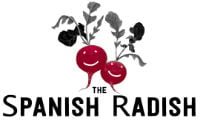Dried vs Canned Chickpeas: Which are Healthier?
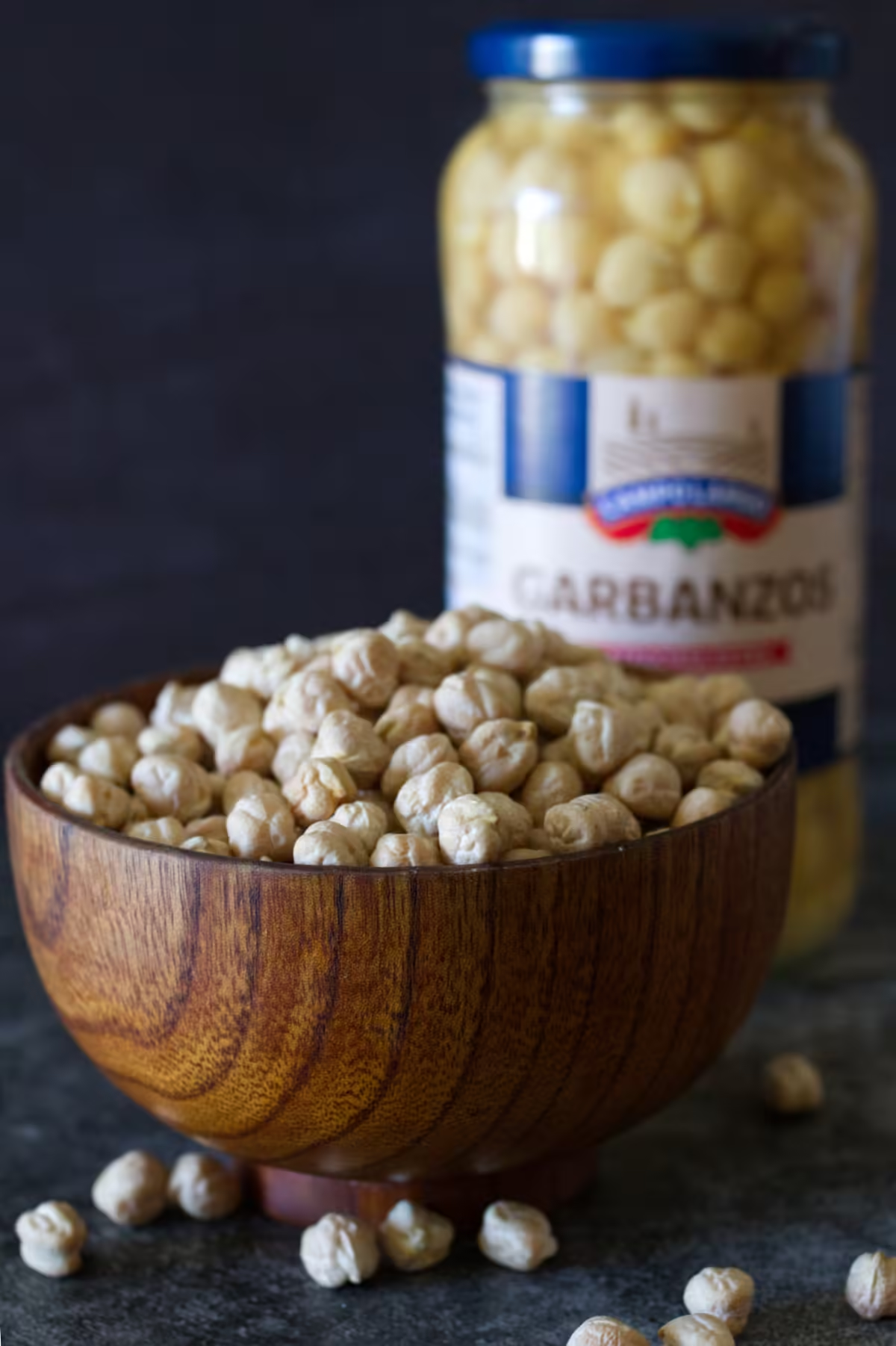
Dried chickpeas have a different nutritional profile compared to canned chickpeas once they are cooked, so which are healthier? In this article, we take a look at which is the healthier choice between dried and canned chickpeas, plus we will also look at some of the pros and drawbacks of each.
When comparing dried chickpeas to canned chickpeas, several factors come into play, including nutritional content, sodium levels, cost, and convenience. Here’s a breakdown of how they stack up against each other
Nutritional Content
So first things first! Chickpeas are healthy! They are a great source of plant-based protein, they are high in dietary fiber, and a great source of iron and magnesium.
We have said it before and we will say it again: Chickpeas are little mineral and protein superheroes!
Chickpeas provide plenty of the nutrients we need and are a great base for any meal or salad. Generally speaking, one cup of rehydrated chickpeas provides:
- 269 calories.
- 14 grams of protein.
- 4 grams of fat.
- 12 grams of dietary fiber.
- 80 milligrams (mg) of calcium.
- 4.74 mg of iron.
- 78.7 mg of magnesium.
Chickpeas are also packed with carbohydrates that slowly release energy after eating them. This makes them very filling and healthy for your gut too. Win-win!
Dried Chickpeas: When cooked from dried, chickpeas are typically more nutrient-dense. They retain their natural vitamins and minerals without the risk of nutrient loss during processing.
Canned Chickpeas: These are pre-cooked and may lose some nutrients during the canning process due to heat and the preservation process. However, they still retain most of their nutritional value and are a good source of protein, fiber, vitamins, and minerals.
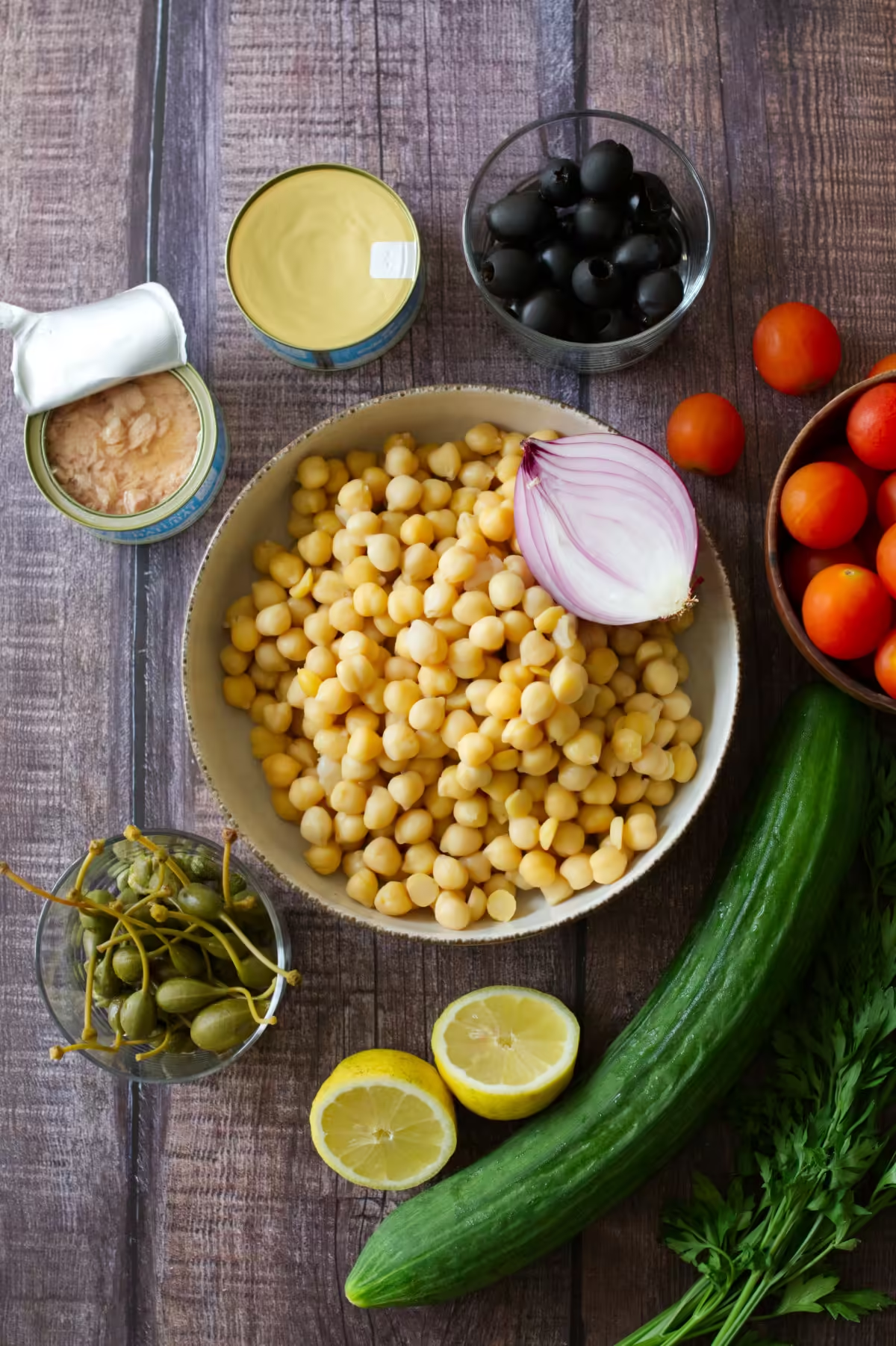
A Note on Comparing Nutrition Facts Side by Side
Comparing a cup of each yields different results when you consider once they are prepared for cooking. Dried chickpeas are tiny in size compared to their canned counterparts and this is because dried chickpeas need to be rehydrated before they can be cooked with. This process of rehydration causes the dried chickpea to absorb water and more than double in size, actually the longer you leave them in water, the more they expand, up to 3 times their size.
If you were to rehydrate one cup of dried chickpeas, you’d actaully have 3 or 4 cups worth to use in recipes.
Dried chickpeas expand significantly and for this reason, one cup of dried chickpeas is not the same (nutritional value) as a cup of canned chickpeas, it is wayyyyy higher in calories and other values.
So, while the information below appears to favor canned chickpeas as the healthier option, the serving size, and preparation must be taken into consideration as they are not equal when doing a ‘cup-for-cup’ comparison.
Dried Chickpeas Nutrition Facts

Canned Chickpeas Nutrition Facts

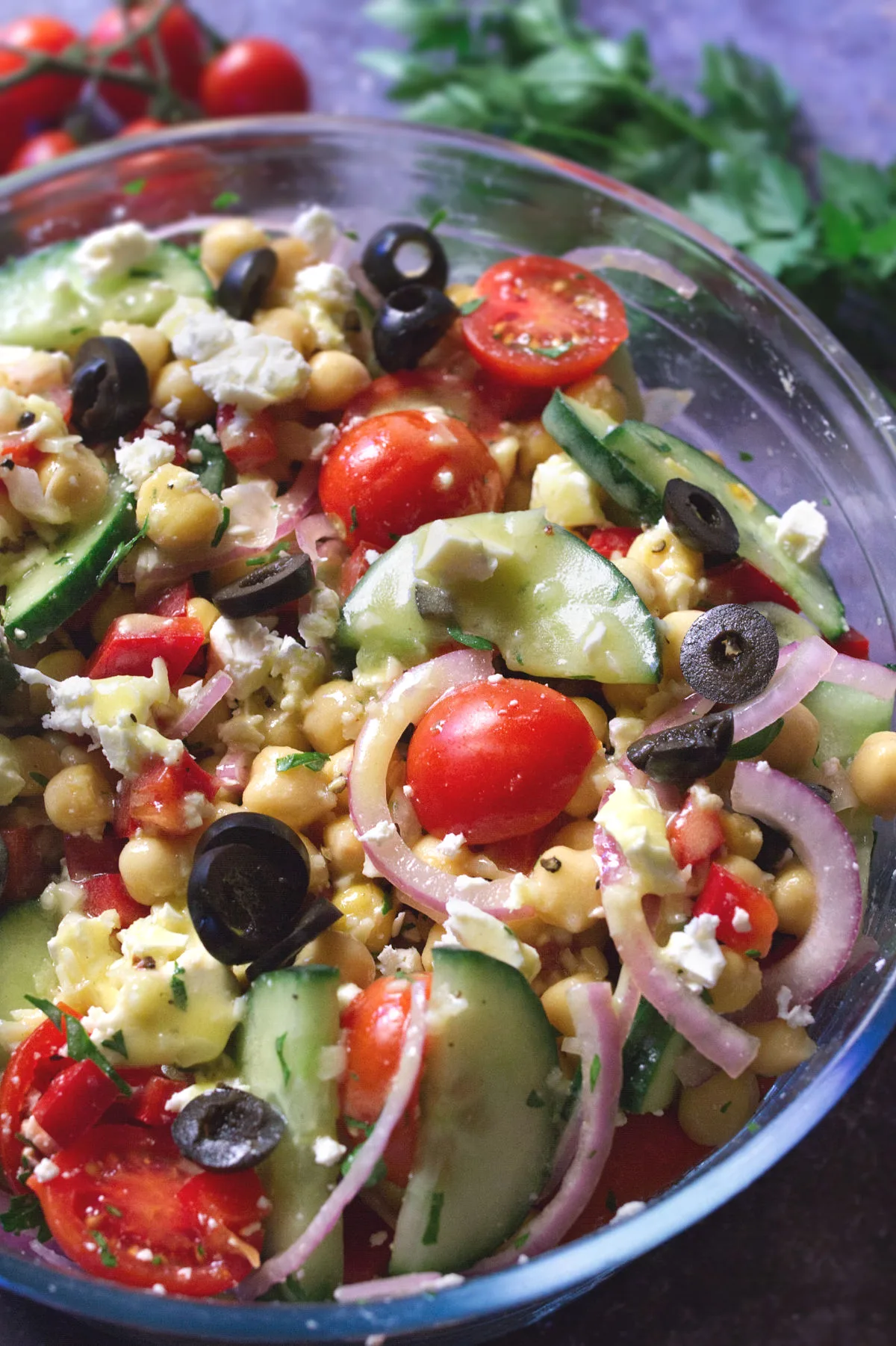
Sodium Content
This is a big consideration and perhaps the most influential in using prepared dried chickpeas in your cooking.
- Dried Chickpeas: When you cook dried chickpeas at home, you control the amount of salt added, so the sodium content is usually low unless you add salt during cooking.
- Canned Chickpeas: On the other hand, canned chickpeas often contain added sodium (salt) as a preservative. Some brands offer low-sodium or no-salt-added versions, which can be a healthier choice if you’re concerned about sodium intake.
Here are a few brands that are ‘Low-sodium’ or have ‘No added salt’:




Additives and Preservatives
Another big consideration is the amount of preservatives used in canned chickpeas. Depending on the brand, preservatives are used to help extend shelf life.
These preservatives can be natural or chemical and can include salt or calcium chloride. While they play a crucial role in food safety by inhibiting the growth of harmful bacteria, molds, and yeasts, the health effects of preservatives can vary depending on the type and amount consumed.
Natural Preservatives:
- Examples: Salt, sugar, vinegar, lemon juice, rosemary extract.
- Health Impact: Generally considered safe and has been used for centuries. However, excessive consumption (e.g., too much salt or sugar) can have negative health effects.
Artificial or Chemical Preservatives:
- Examples: Sodium benzoate, nitrates/nitrites, sulfites, BHA (Butylated Hydroxyanisole), BHT (Butylated Hydroxytoluene).
- Health Impact: These are synthetically produced and their safety is more controversial.
- While most are approved by food safety authorities in controlled amounts, concerns exist regarding long-term health effects.
Most preservatives are safe when consumed in moderation as part of a balanced diet. Natural preservatives are generally safer than synthetic ones. When purchasing canned chickpeas, be mindful of ingredient labels, and take some time to understand the types of preservatives in your food can help you make informed choices.
Here’s a quick takeaway regarding dried ‘vs’ Canned chickpeas and preservatives:
- Dried Chickpeas: Typically free from additives and preservatives. The only ingredients are the chickpeas themselves.
- Canned Chickpeas: Depending on the brand, canned chickpeas may contain added preservatives, stabilizers, or even sugar. Reading labels is important to know exactly what’s in the can.
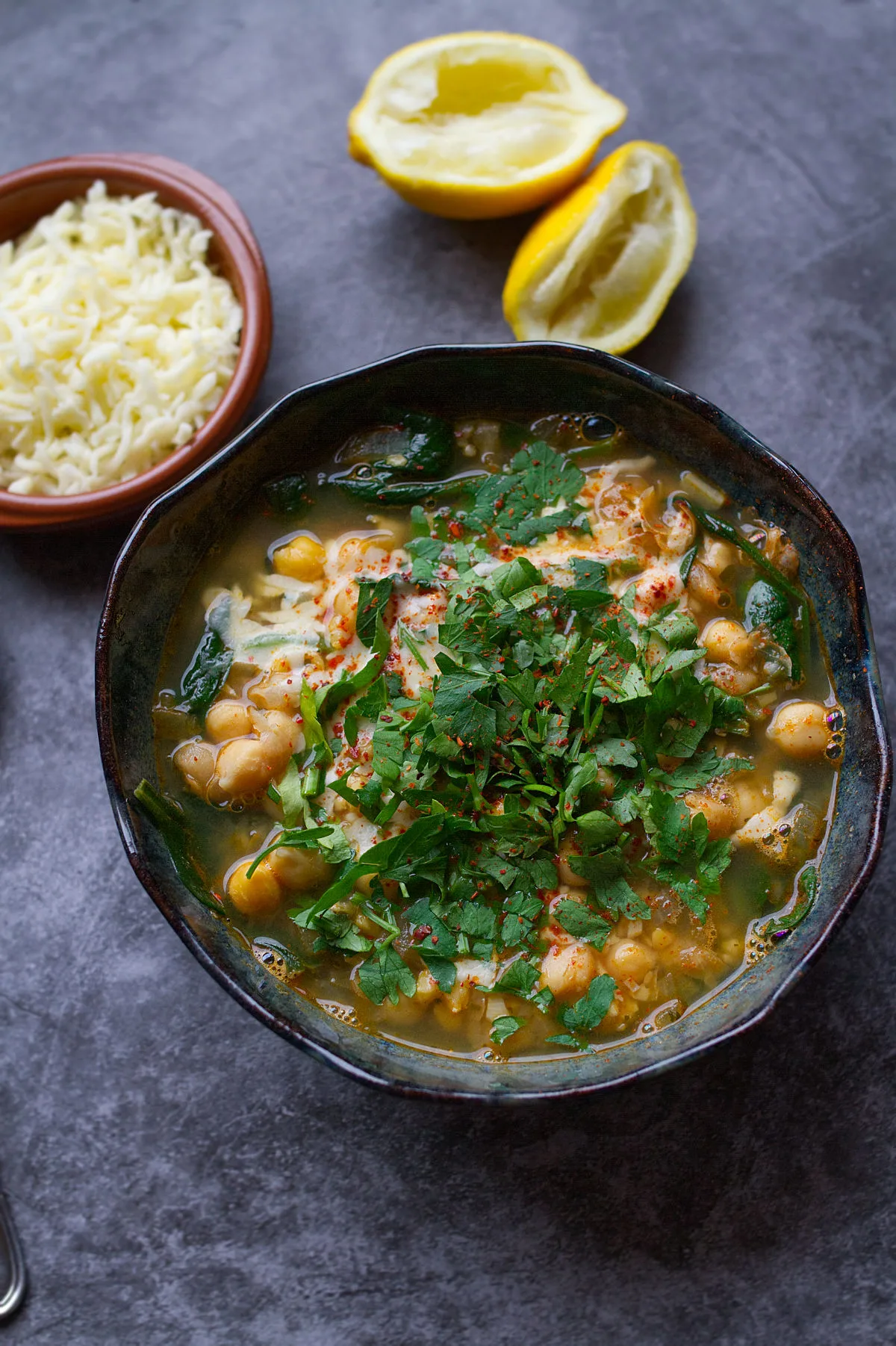
Cost
Undoubtedly, one of the best things about chickpeas is that they are super budget-friendly, and no matter which type of chickpeas you choose to use, they will be affordable!
Chickpeas are one of the cheapest and best plant-based protein sources out there, with a 15 oz (420g) can of chickpeas selling for a little over USD $1. For our European friends, leading supermarkets sell chickpeas (often labeled as garbanzo beans) for well under 1 Euro!
So, the good news, dried chickpeas are even cheaper!
A 16oz. (450g) bag of dried chickpeas goes for around USD $1.90! And as we’ve discussed before, once the dried chickpeas are rehydrated, that will make around 64 ounces of chickpeas for use recipes. That’s 1.8 kilos of good quality plant-based protein for under USD $2.00!
- Dried Chickpeas: Generally more economical, especially when bought in bulk. Although they require more time to prepare, they can be stored for a long time and are a cost-effective option.
- Canned Chickpeas: More expensive per serving compared to dried, but they save time and effort in preparation.
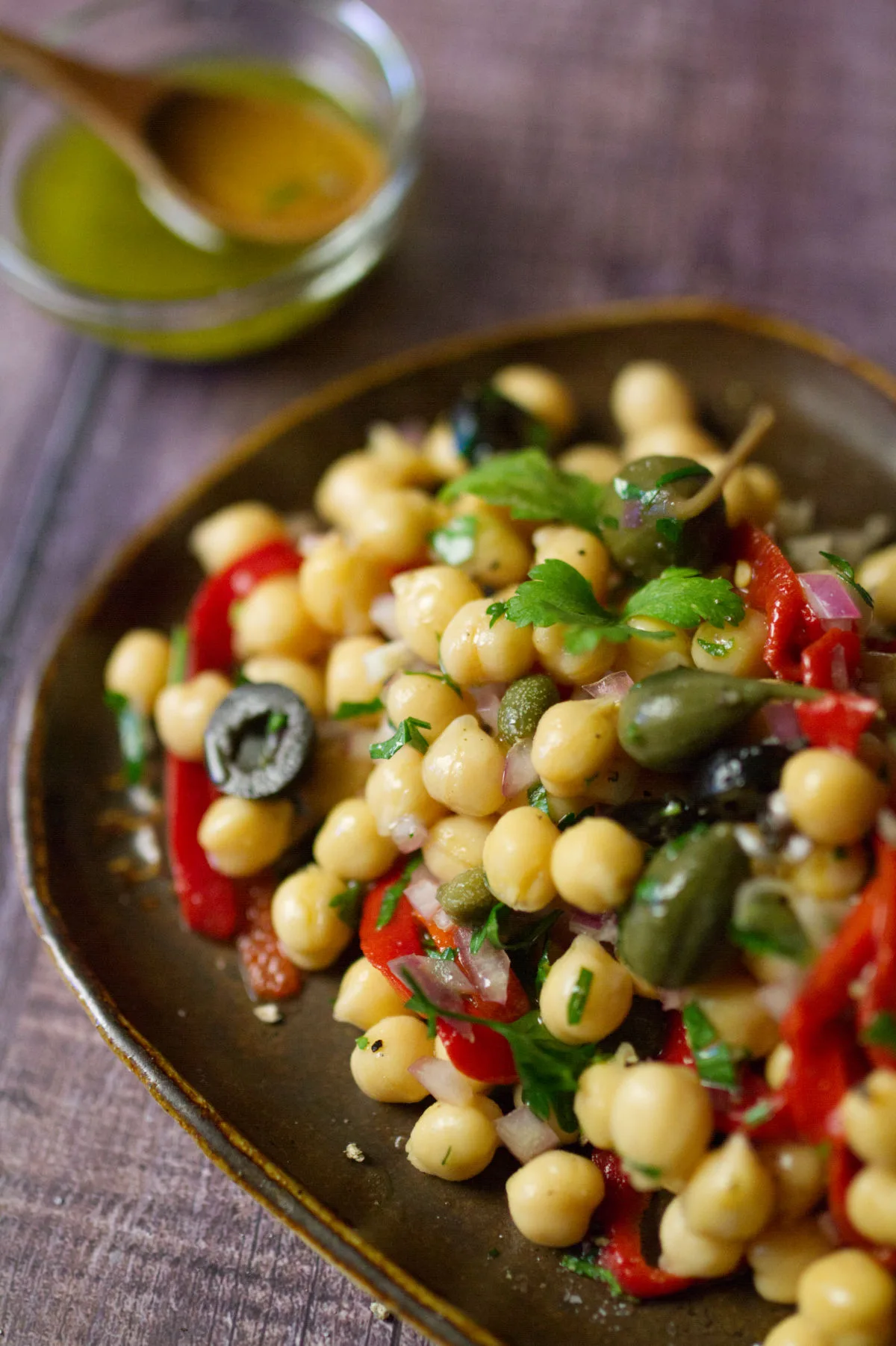
Convenience
Who doesn’t love an ingredient to a recipe that can be added with just a rinse and they’re ready to cook? Indeed, canned chickpeas are ideal for making a meal when life is busy.
- Dried Chickpeas: Require soaking (usually overnight) and longer cooking times. This can be inconvenient if you need a quick meal.
- Canned Chickpeas: Ready to eat out of the can after a quick rinse. They are a convenient option for quick meals and snacks.
Canned chickpeas are great in so many ways, whether used to bulk up stews, added to salads, or whipped up to create a flavorsome Mediterranean hummus! And it’s fair to say that a few cans of chickpeas are always in our pantry here at the Spanish Radish HQ.
- Mediterranean-Chickpea-Tuna-Salad Recipe | High protein + Ready in 10 minutes
- Mediterranean Hummus – The Healthy Hummus Recipe
How to Prepare Dried Chickpeas
If you’re using dried chickpeas, then allow some extra time to prepare the dried chickpeas.
- First, soak the dried chickpeas in some clean fresh water overnight. The chickpeas will expand around twice their size so add around double the amount of water to chickpeas in a large bowl.
- Next, drain them from the water and add them to a pan with some fresh water.
- Cook them for around 2 hours for them to soften up. Alternatively, use a slow cooker or pressure cooker to prepare your chickpeas.
Conclusion: Which is Healthier?
Hands down, dried chickpeas are healthier, and the reason is simply because they do not have any additional salt or preservatives. Dried chickpeas are also more nutrient-dense once prepared and ready for cooking compared to using canned chickpeas. That said, both canned and dried chickpeas are healthy and an excellent source of nutrients the body needs!
Here’s a few takeaway points:
- Dried Chickpeas are generally considered the healthier option due to their lower sodium content, lack of preservatives, and higher nutrient density. However, they require more preparation time.
- Canned Chickpeas are a healthy and convenient option, especially if you choose low-sodium or no-salt-added varieties and rinse them before use to reduce sodium content.
In summary, if you have the time and are looking for the purest option, dried chickpeas are healthier. However, canned chickpeas are still a nutritious choice, especially if you’re short on time and select a variety with minimal additives.
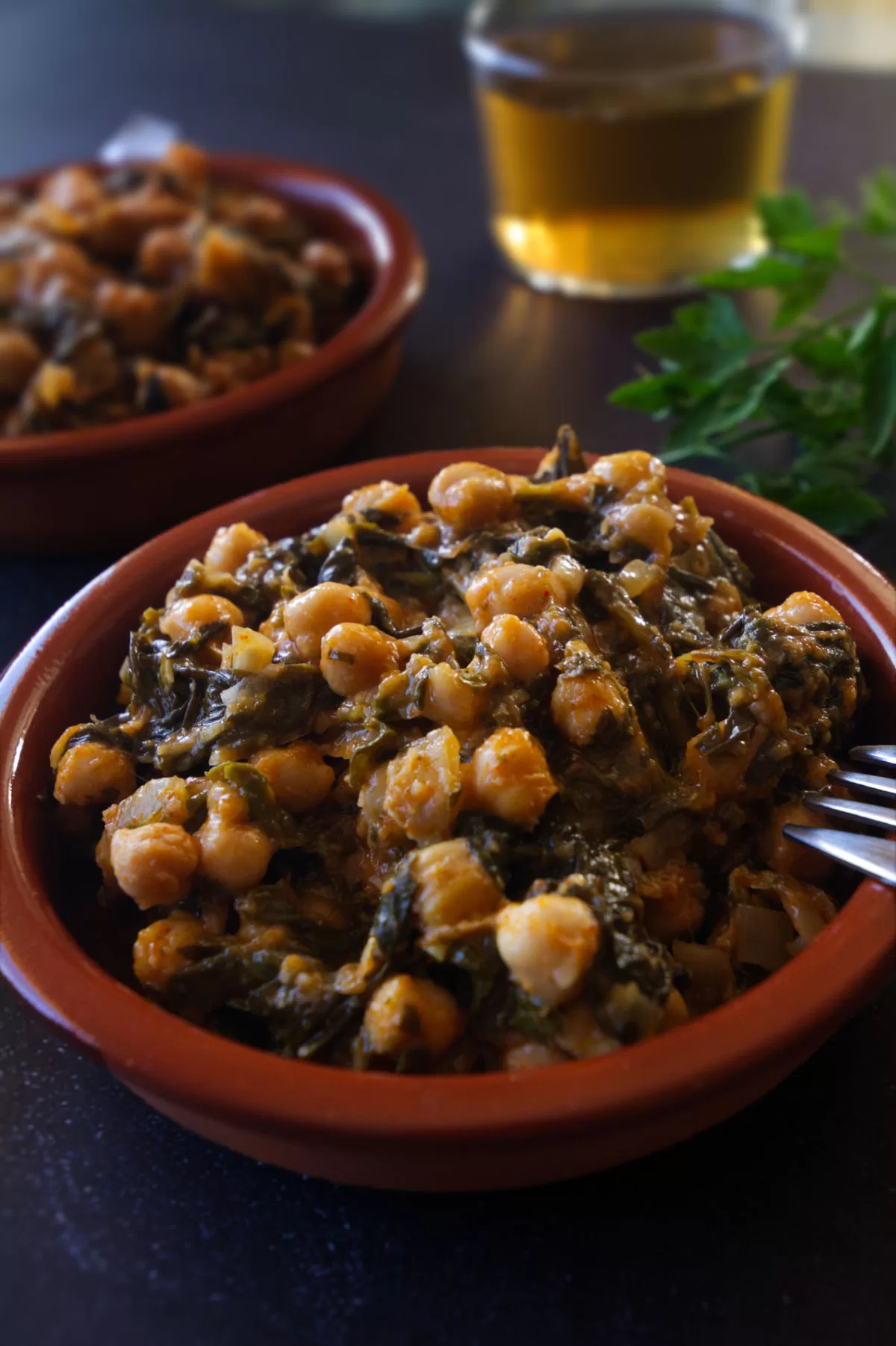
Chickpea Recipes We Love!
- Chickpea and Caper Salad with Charred Red Peppers (Garbanzos Alinados con Alcaparras)
- Maravilla Stew With Chickpeas And Smoky Paprika (Vegan, Filling, Healthy, One-Pot)
- Maravilla fish stew with chickpeas and pearl pasta
- Mediterranean Chickpea Salad + Lemon Vinaigrette | Ready in 10 Minutes!
- Spinach and Chickpea Soup with Lemon and Smoked Paprika
- Smoky Spanish chorizo stew with spinach and chickpeas
- Chickpeas with Spinach and Eggs (Budget-Friendly Recipe)
- Chickpea Stew (Spanish Potaje de Garbanzos) Vegan/GF
- Mediterranean Chickpea Fritters (with Romesco Dipping Sauce)
- Jamon Iberico Salad with Orange, Chickpeas, and Almonds
- Mediterranean Eggplant Casserole with chickpeas and tomato
- Vegan Spinach with Chickpeas Recipe
Want to discover more Healthy Spanish Recipes?
Check out our recipes on our website, or watch step-by-step recipe videos on the

